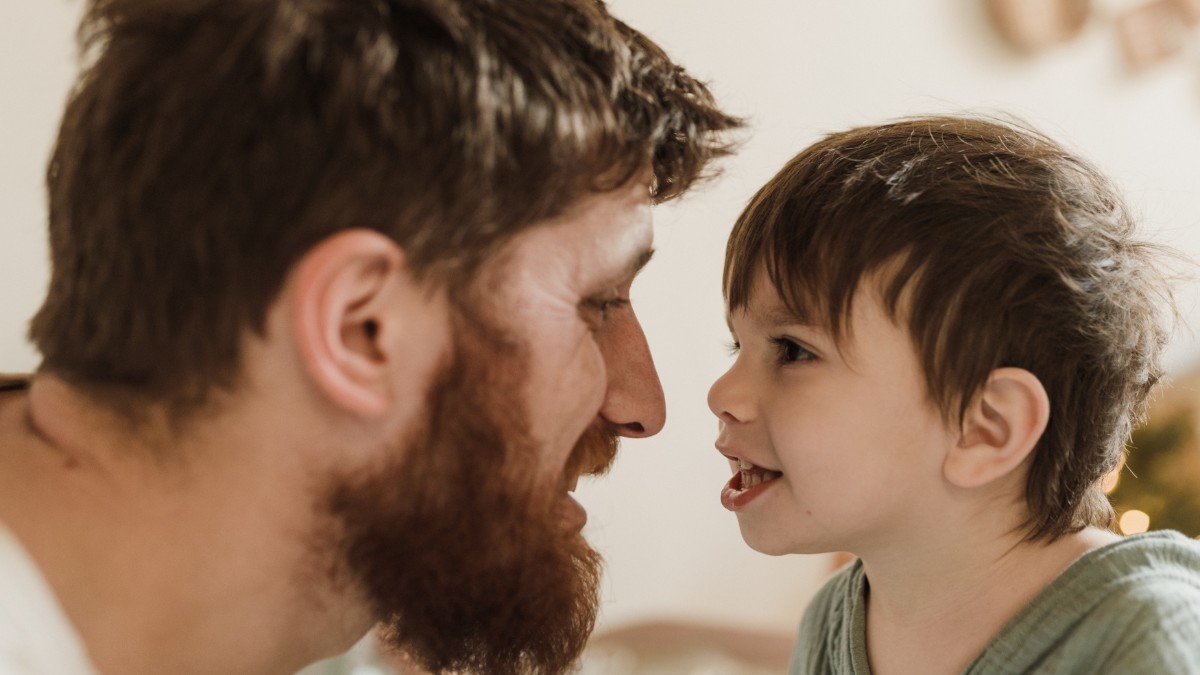Facial expressions are a vital part of communication. They help us understand how someone is feeling without needing words. A smile can signal happiness, a frown can show disappointment, and raised eyebrows might mean surprise or confusion.
For many autistic children, however, interpreting these facial cues is not as straightforward. Their unique way of processing emotions and social signals can lead to differences in how they perceive, understand, and respond to facial expressions.
As such, we’re going to explore six ways autistic children perceive facial expressions. Let’s get started.
Difficulty Recognizing Subtle Emotional Cues
One of the most common differences in how autistic children perceive facial expressions is difficulty recognizing subtle emotions.
While they may understand basic expressions like a broad smile for happiness or a deep frown for sadness, more nuanced expressions can be much harder to interpret.
This difficulty often stems from differences in how autistic brains process visual and social information. Studies using eye-tracking technology show that autistic individuals tend to focus less on the eyes and more on the mouth or other parts of the face.
Since many subtle emotions are expressed through the eyes, this difference in attention can make it harder for autistic children to pick up on unspoken emotional cues.
As a result, they may not always realize when someone is being playful, annoyed, or embarrassed, leading to misunderstandings in social interactions. This can sometimes make them seem unresponsive or indifferent when, in reality, they simply don’t recognize what’s being communicated through facial expressions alone.

Literal Interpretation of Facial Expressions
Autistic children often take things literally, and this can extend to how they interpret facial expressions.
While many neurotypical individuals understand that a facial expression might not always match what a person is truly feeling, autistic children may assume that every facial expression directly reflects an emotion.
For example, if someone smiles while feeling nervous, an autistic child may only see the smile and assume the person is happy. They may struggle to recognize when a facial expression does not match the emotional state behind it.
This literal interpretation can make social interactions challenging, as they may not pick up on hidden emotions, sarcasm, or polite expressions that mask true feelings.
Due to this, some autistic children may find social interactions confusing or unpredictable. They might not understand why a friend seems upset despite smiling or why an adult’s polite nod does not necessarily mean agreement.
Overwhelm from Too Many Facial Details
For some autistic children, faces can be overwhelming. A face is made up of many moving parts, all shifting with different expressions. While most people process a face as a whole, autistic individuals may focus on specific details rather than the bigger picture.
This detailed focus can make it difficult to recognize emotions quickly. Instead of seeing an entire facial expression at once, an autistic child might notice individual features separately. They might focus on the way the lips move without noticing changes in the eyes, or they may fixate on the shape of the eyebrows without connecting them to an emotion.
This can make emotional recognition slower and sometimes frustrating. In social situations where facial expressions change rapidly, autistic children may struggle to keep up, leading to feelings of confusion or anxiety.
Some may even prefer to avoid looking at faces altogether because of the sensory overload it can cause.
Difficulty Differentiating Similar Expressions
Some facial expressions look similar but mean very different things. A slight smirk might indicate amusement, but it can also suggest smugness. A furrowed brow can mean deep concentration, or it can signal anger.
While neurotypical individuals can usually tell the difference based on context and slight changes in facial movement, autistic children may struggle with these distinctions.
This difficulty often leads to misunderstandings. A child might assume that someone concentrating is actually upset with them, or they might mistake a sarcastic grin for a genuine one. These misinterpretations can make social interactions stressful, as they may react in ways that others do not expect.
For instance, if an autistic child perceives a neutral or mildly concerned face as an angry one, they might become anxious or defensive. On the other hand, if they fail to recognize a warning expression that signals frustration, they might unknowingly continue a behavior that upsets someone. These challenges highlight the importance of tailored educational approaches—something we explore in depth in An Overview of Special Education for Autistic Children, which discusses how structured support can help children better navigate social cues and thrive in academic settings.
These misunderstandings can sometimes lead to social challenges, such as difficulty making friends or misreading social cues in group settings.
Preference for Clear and Exaggerated Expressions
Because subtle facial cues can be difficult to read, many autistic children find it easier to understand expressions that are exaggerated or clearly distinct.
Bright, animated smiles, exaggerated frowns, or wide-open eyes are often easier to interpret than more subtle emotional shifts.
This is why some autistic children respond well to visual aids that feature cartoon-like facial expressions. Many therapies and educational tools use exaggerated drawings or digital avatars with clear emotions to help autistic children practice recognizing different expressions.
These tools break down facial expressions into simple, recognizable components, making them easier to understand.
Some autistic children may also prefer interacting with people who use more expressive body language and facial expressions. When emotions are communicated in an obvious and direct way, it reduces the guesswork involved in social interactions, making communication smoother and less stressful.
Reliance on Other Cues Besides Facial Expressions
Since facial expressions alone may not always provide enough information, many autistic children rely on additional cues to understand emotions. The tone of voice, body posture, and spoken words can all help them interpret what someone is feeling.
For example, if a person’s facial expression is unclear but their voice sounds excited, an autistic child might use the tone of voice to determine that they are happy. Likewise, if someone’s posture is tense, they may recognize that something is wrong, even if they don’t fully understand the person’s facial expression.
This reliance on other cues can sometimes make communication easier, but it can also create difficulties if those cues are inconsistent.
For example, if someone speaks in a cheerful tone while their face looks upset, an autistic child may be unsure which signal to trust. This can lead to confusion in situations where people say one thing but feel another, such as when someone says, “I’m fine” while clearly looking frustrated.

Conclusion
The way autistic children perceive facial expressions is complex and unique to each individual.
Some may struggle to recognize subtle emotions, while others may take facial expressions literally or become overwhelmed by too many details. Misinterpreting similar expressions or preferring exaggerated emotions can also play a role in how they navigate social interactions.
Many autistic children rely on additional cues like tone of voice and body language to help them understand emotions more accurately.
Understanding these differences can make a huge difference in supporting autistic children. By using clear expressions, direct communication, and patience, caregivers, teachers, and peers can help create a more inclusive and understanding environment.
Recognizing that autistic children experience the world in their own unique way allows us to appreciate their perspective and find ways to communicate that make them feel comfortable, valued, and understood. We at Golden Care Therapy offer ABA therapy that’s tailored to each child’s needs so they can build essential skills in a supportive and nurturing environment. Our experienced team is dedicated to making meaningful progress with every child we work with.
Looking for autism services in New York, New Jersey, Indiana, Georgia, or Florida? We’re here to help! Contact us today to learn how we can support your child’s growth and development.
Sources:



